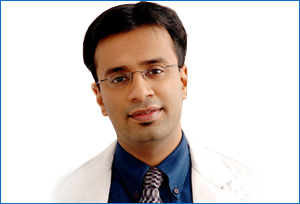Le Fort Fractures
Le fort fractures are the fractures that occur across the midface and which involve the maxillary bone. The Le fort fractures can occur in the horizontal direction across the maxillary bone or in the pyramidal pattern. Because of the Le fort fractures, the pterygoid plates get fractured. These plates are situated between the maxillary sinuses and the inferior maxillary margin. This maxillary structure is the anchoring point for stabilization of the midface and it needs treatment in case there is trauma to the maxillary structure.
Classification of Le fort fractures:-
- Le fort I- The Le fort fracture I is the low level maxillary fracture. In this category of Le fort fractures the tooth bearing maxillary portion which at the nose floor level and the top maxillary sinuses get fractured. The median line of the fracture passes through the roots of the teeth through the maxillary sinuses. Le fort fracture I happens when the trauma is aimed at lower maxillary alveolar rim.
- Le fort II: – The pyramidal fracture of the maxillary bone is known as Le fort II fracture. The Le fort II fractures occur when the maxillary bone is affected at the middle or the third portion of it. The pattern of the Le fort II fractures is pyramidal. The Le fort II fractures extend from the maxillary superior medial wall laterally to the lacrimal bones.
- Le fort III: – The Le fort III fractures occur to upper maxillary portion of the face or the nasal bridge. The Le fort III fractures extend from the frontal nasal structure to the frontal maxillary bone. The Le fort III fracture is limited to beyond the optic canal. Because of the Le fort III fractures the whole facial structure shifts from its axis.
Signs and symptoms of Le fort fractures:-
- Displacement of the frontal Zygomatic structure.
- Missing and loose teeth.
- Swelling and tenderness of the soft tissues of the face.
- Sometimes, the upper jaw area may make a creaking noise when it is made to move a little.
Some symptoms are common to Le fort I and Le fort II fractures such as the creaking sound of the jaw face deformity and diplopia.
Scenario of treatment of Le fort fractures in India:-
Le fort fractures pose a lot of threat to functional and aesthetic aspect of the maxillary area. A lot of expertise is required for the treatment of the Le fort fractures and the maxillary portion of the face as even a minor mistake could result in complete loss of function and permanent disfigurement. Therefore only the best maxillofacial surgeon should be perform the treatment because there are a lot of things to be taken care of during the treatment of Le fort and maxillary structures. In India, the treatment of Le fort maxillary fractures are quite common but the anatomy of the maxillary structure is quite complex. The best doctor to get the treatment for Le fort fracture and reconstruction of the maxillary structure is Dr. Debraj Shome. He is the best facial plastic and maxillofacial surgeon of India, who is currently practicing in Mumbai. In Dr. Shome’s opinion, maxillary surgery of the Le fort fractures is initiated with stabilization treatment of the maxillary structures. In India, the top common diagnostic tools used are MRI and CT scan. In India, after the patient is stabilized, the next step is surgery which is best performed by orthopedic intervention. Sometimes, to get the best outcome from the surgery, titanium screws and steel plates may be used in the maxillary structure to repair the Le fort fracture. According to Dr. Shome, the number of incidences of Le fort fractures is increasing but due to inadequate health care in India, most patients of India do not get the complete or the proper treatment. Due to insufficient resources in many parts of India, people have to come to Mumbai and other metro cities for proper treatment. If the top quality treatment is available in not just Mumbai but the rest of India as well, people will recover quickly from maxillary injuries including the Le fort fractures. Based on a demographic study, not just cities like Delhi and Mumbai, even the non metros have high number of patients of Le fort fractures in India. However, due to lack of primary form of medical intervention, many suffer from permanent disfigurement. Dr. Shome says that he performs reconstructive surgery in Mumbai and since the patient has delayed the treatment before coming to Mumbai, the entire procedure becomes more complex. The health care system of India still focuses on the urban areas like Mumbai whereas almost 70% of India is still rural.
Most maxillofacial surgeons are still in urban cities like Mumbai. This makes the best quality treatment a luxury for people who suffer from Le fort fracture in the rural areas of India. By the time the patients reach Mumbai or some other city, the condition is worsened due to open fractures or infection. In India, there is inconsistency in the standard of health care even within the same city, for example Mumbai. Once the case has a reached one of the top hospitals in Mumbai the surgeon needs to focus on various aspects of the fracture that may have worsened due to delayed treatment. Dr. Shome is the top surgeon of Mumbai who regularly performs follow up surgeries on patients from all over India who do not have the best facilities in their cities. On an average, every month, almost 50- 60 Le fort fracture patients take consultation by Dr. Shome in Mumbai who come from all over India after a substantial delay. Dr. Shome says that in India almost 5 million cases of Le fort fractures are reported annually. Many of his patients that come for treatment are not from Mumbai but tier II cities. Mostly the best surgeons and top treatment facilities are available in cities like Delhi, Mumbai, and Pune etc.

